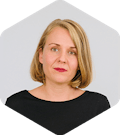How to build a website like Amazon
Amazon is the world's sixth-largest company. The tech to build a similar marketplace is available to everyone. Here's how to build a website like Amazon—and succeed with your business.
Amazon is the world's sixth-largest company – or the second-largest based on revenue. But despite its dominance, smaller online marketplaces still have huge entry opportunities in the niche. This guide walks you through the process of building a website like Amazon, from establishing your business model to launching your first MVP and more.
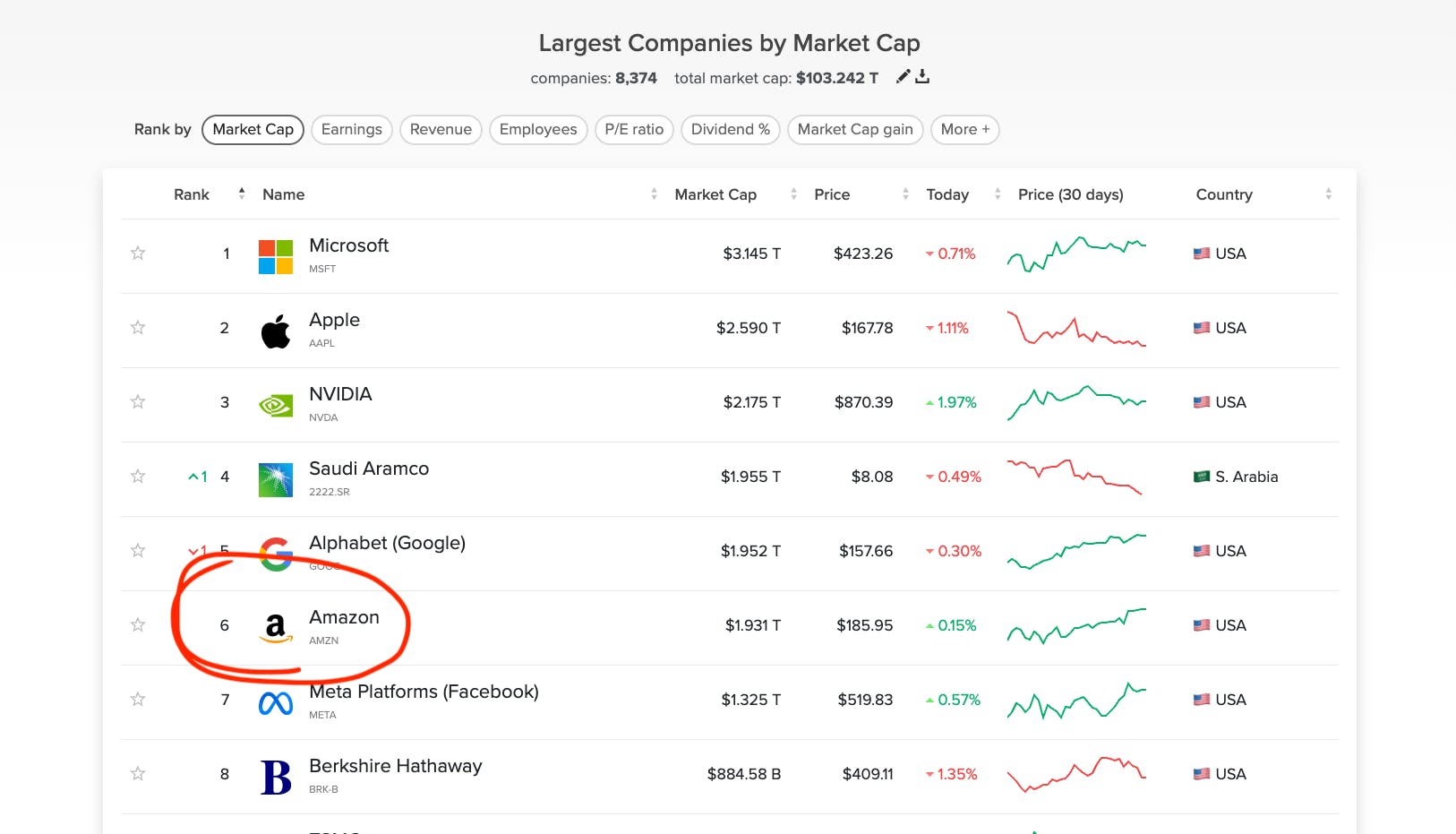
Online marketplaces are growing rapidly.
By 2024, the top 100 marketplaces alone are expected to generate $3.832 trillion in total Gross Merchandise Value (GMV)—meaning that they have doubled in market size within just six years.
And this is just the beginning. Projections indicate that by 2027, third-party sales through online marketplaces will be the largest and fastest-growing retail channel worldwide.
The interesting part is that global giants like Amazon are facing increasing competition from smaller, nimbler players that focus on a niche. That’s why you should get in, too.
Besides its promising future, building a marketplace like Amazon is an accessible start-up model that doesn’t require a huge team and budget. Here’s why:
- No inventory needed: Unlike traditional e-commerce sites, you don't need to stock or manage inventory. Instead, you connect buyers with third-party sellers. This asset-light approach reduces overhead and risk and makes the marketplace model extremely scalable.
- Low barrier to entry: Modern website and marketplace platform builders have made it easier than ever to launch an online marketplace quickly and inexpensively.
- Test and iterate easily: Sharetribe, for instance, lets you launch a fully functional marketplace website within a day without writing a single line of code. You can test your business idea, get user feedback, and iterate on your model before investing heavily.
- Customization possibilities: When ready to scale, you can easily extend your marketplace by adding custom coding and features to your initial Sharetribe-powered platform.
The opportunity to build a thriving, niche online marketplace has never been more accessible. This guide teaches you how to bring your vision to life sustainably.
Amazon connects third-party sellers with buyers worldwide. This marketplace model is the driving force behind Amazon's operation and success.
Sellers on Amazon can list and sell almost any type of product on the platform and access tools to manage their product catalog, inventory levels, pricing strategies, and order fulfillment processes. They can choose to handle shipping themselves or use Amazon's fulfillment services.
Data analytics and reporting tools are also available to track sales performance, advertising ROI, customer feedback, and more. Sellers also get access to Amazon's advanced advertising solutions to promote their product listings through sponsored ads.
Amazon handles customer service inquiries about orders, while sellers manage inquiries about their products.
For buyers, Amazon offers a browsable product catalog for every category. Rich product pages with high-quality imagery, videos, descriptions, and reviews help customers make informed purchase decisions.
Amazon’s seamless checkout experience, trusted payment processing (Amazon Pay or cards), and flexible shipping options make for a smooth and reliable buying experience. Their customer service system handles inquiries, returns, and refunds.

Amazon’s marketplace primarily runs a commission-based business model and does not charge users who want to sell or purchase upfront. It generates most of its revenue through commissions charged to third-party sellers for each product sale on the marketplace.
As the company has expanded, this revenue model has also diversified. Amazon now has additional offerings beyond its marketplace roots, some of which include:
- Amazon Prime membership with services like free delivery, streaming service, exclusive deals, and more.
- Amazon hardware like Kindle e-readers, Fire tablets, and Echo smart speakers.
- Cloud services through Amazon Web Services (AWS).
Amazon has purchased companies that operate in areas complementary to its core business. These become subsidiaries, fully owned and controlled by Amazon. Examples include:
- Audible for audiobooks.
- Goodreads for book reviews.
- Twitch for live streaming.
- Whole Foods grocery chain.
However, the main e-commerce marketplace remains central to Amazon's success. This guide focuses on replicating that foundational marketplace functionality and experience for your online business.
Amazon was founded by Jeff Bezos in 1994, initially as an online bookstore. Bezos's vision was to create a store that could offer more books than any physical bookstore, using the vast and scalable nature of the internet.
Starting with books allowed Amazon to perfect its e-commerce model. The company soon expanded into selling various goods, becoming a one-stop shop for almost anything a consumer needs.
Here are some things you can learn from Amazon when building your own business:
- Start small, think big: Amazon's beginnings in the niche market of books served as a scalable, manageable starting point, laying a strong foundation for future expansion. Start with a clear, focused scope before scaling.
- Obsess about your customers: A core part of Amazon's ethos is its commitment to customer satisfaction. Bezos once said, "Start with the customer and work backward." This principle guided Amazon to prioritize customer needs and convenience, such as easy returns, fast shipping, and low prices.
- Test, learn, fail – and try again: Amazon's success is also attributed to its culture of innovation and willingness to experiment boldly. Amazon is not afraid to test new ideas, learn from failures, and iterate. Not all experiments have succeeded – Amazon’s Fire smartphones were a flop. But many have. For example, Amazon developed its own hardware (like Kindle), launched services (like Amazon Prime), or entered entirely new business domains (like cloud computing with AWS).
- Iterate constantly: Amazon's approach is iterative; they constantly refine and improve their services based on customer feedback and data. This iterative process ensures that Amazon stays ahead in meeting and anticipating customer needs.
This customer-centric and innovative approach is exactly what Sharetribe has seen work for the success of marketplace founders we've collaborated with over the past decade.
Next, let’s look at how the approach translates into practical, actionable steps that take you from zero to one in your founders’ journey.
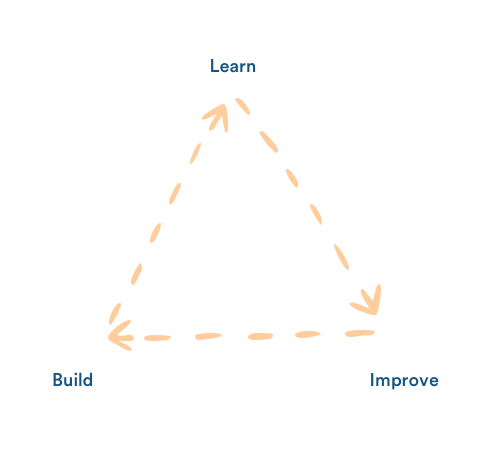
At Sharetribe, we’ve worked with hundreds of marketplace founders. We’ve found that the best way to build a marketplace like Amazon is by following these ten steps:
- Identify a strong marketplace idea.
- Choose the right marketplace business model.
- Start with a focused scope.
- Pre-validate your marketplace idea.
- Build a website like Amazon, starting with an MVP (Minimum Viable Platform).
- Onboard your first sellers.
- Launch your marketplace.
- Reach problem-solution fit.
- Reach product-market fit.
- Scale into new markets.
Next, we’ll discuss these 10 steps specifically in the context of building a website like Amazon. For more details and additional resources, check out our definitive guide on creating a marketplace.
The first step is to find a unique, strong idea that will likely resonate with customers.
Remember Amazon's rules of starting small when choosing your idea. Bezos’s idea was to make how people shopped for books faster and easier. What small niche could you focus on to improve the shopping experience?
Here are some insights to identify a marketplace idea like Amazon’s:
- Consider verticals or niches not well served by Amazon's marketplace. Look for categories that have consistently poor reviews, listings lacking detailed information, or long delivery times. These pain points are potential areas for creating a better and more curated marketplace focused on better service.
- Consider categories where you have expertise and experience, and ideas on how you could improve the experience.
- Join and gather insights from communities like Reddit, Quora, and niche forums. Look for recurring complaints, suggestions, or wish lists that customers and sellers express about their Amazon experience. For instance, some sellers complain on Reddit about Amazon's new placement fee. These conversations may help you find opportunities to create a more specialized and tailored selling experience based on customers' needs and preferences.

Like Amazon, your marketplace should:
- Solve a real problem for both sides of your marketplace.
- Have a large enough market that matches your business goals.
- Have fragmentation, meaning there are several sellers and buyers in the niche.
- Have potential for frequent usage (repeat purchases).
There are generally six different business models online marketplaces use:
- Commission
- Subscription
- Listing fees
- Lead fees
- Freemium models
- Featured listings.
Amazon’s marketplace follows a commission-based model. They generate revenue by charging third-party sellers a fee for each product they sell on the marketplace.
This means that Amazon profits only when sellers successfully sell through its platform. This commission-based approach is common in the marketplace industry as it reduces upfront risks and costs for sellers compared to other models.
Over time, Amazon has added additional revenue streams such as fees for premium seller tools, marketing services, fulfillment and logistics, and more. These add-ons were introduced after establishing the core marketplace experience.
If you're starting a business, avoid overcomplicating your offering with too many services or fees upfront. Focus on delivering exceptional value and only consider expanding revenue streams cautiously after achieving product-market fit.
The lesson from Amazon is starting with a simple, scalable business model that creates value for buyers and sellers from day one.
Just as Amazon began by focusing on the single vertical of books, your online marketplace should start with a very specific and focused scope.
Trying to be a horizontal marketplace for all categories right out of the gate is a recipe for overextending your limited resources.
Following Amazon’s focused approach gives your marketplace startup the best chance at achieving product-market fit quickly.
You can also iterate features and market your platform far more effectively with acute focus versus trying to be everything to everyone from day one.
Overall, start with the most underserved, passionate niche around for which you can realistically build a liquid marketplace. Then, systematically replicate it when expanding into additional verticals down the road (more on this step later).
Pre-validating your marketplace idea basically means checking to see if your online marketplace idea is a good one before you spend a lot of time and money building it.
Amazon itself popularized this lean startup principle of validating before executing.
You must test your assumptions about:
- The real problem or need you want to solve with your marketplace.
- Why people would use your marketplace instead of Amazon.
- If there are enough sellers and buyers to keep your marketplace going.
The best way to go about this is to find your target audience and talk to them.
For example, you could join the earlier-mentioned Amazon seller communities, find a sub-group dedicated to your specific niche, become active there, and ask for advice and feedback openly and genuinely.
First-hand validation allows you to pressure-test your assumptions, refine your positioning messaging, and potentially find early adopters. It's market research grounded in real insights versus just assumptions.
Validate first, then build with confidence.
The first versions of Amazon's website were barebones compared to today's standards. But they had the critical essentials like the ability to:
- Browse an online product catalog.
- Place secure orders and make payments.
They also had something that didn’t sound essential, but that worked for their audience: a notification service to be notified when a book by your favorite author became available.
Similarly, your marketplace MVP can deliver the core value proposition and transaction features without every bell and whistle. But ensure it solves your customers' and sellers’ problems and is lovable from day one.
If you’re not technical, there are 3 options for building an MVP similar to Amazon’s:
- Get a freelancer or an agency to build your MVP from scratch.
- Find a technical co-founder to build an MVP for free.
- Build the MVP yourself with no-code tools.
For example, Sharetribe's no-code platform lets you quickly build and launch a fully operational online marketplace without technical skills. This flexibility of the no-code platform lets you:
- Get your first version live a lot faster
- Gather insights from real customers
- Make changes and test new features quickly and efficiently.
- Conserve resources and focus efforts.
- Evolve based on what users want.
Overall, the fundamental mindset is to:
- Identify the essentials for your target audience to participate in your marketplace's core value exchange.
- Launch just those critical components first as an MVP.
- Then, rapidly gather feedback to determine what to enhance, modify, or develop next based on real user behaviors.
When creating your MVP, you may need to decide whether you need a multi-vendor shopping cart that combines purchases from different sellers into one checkout experience.
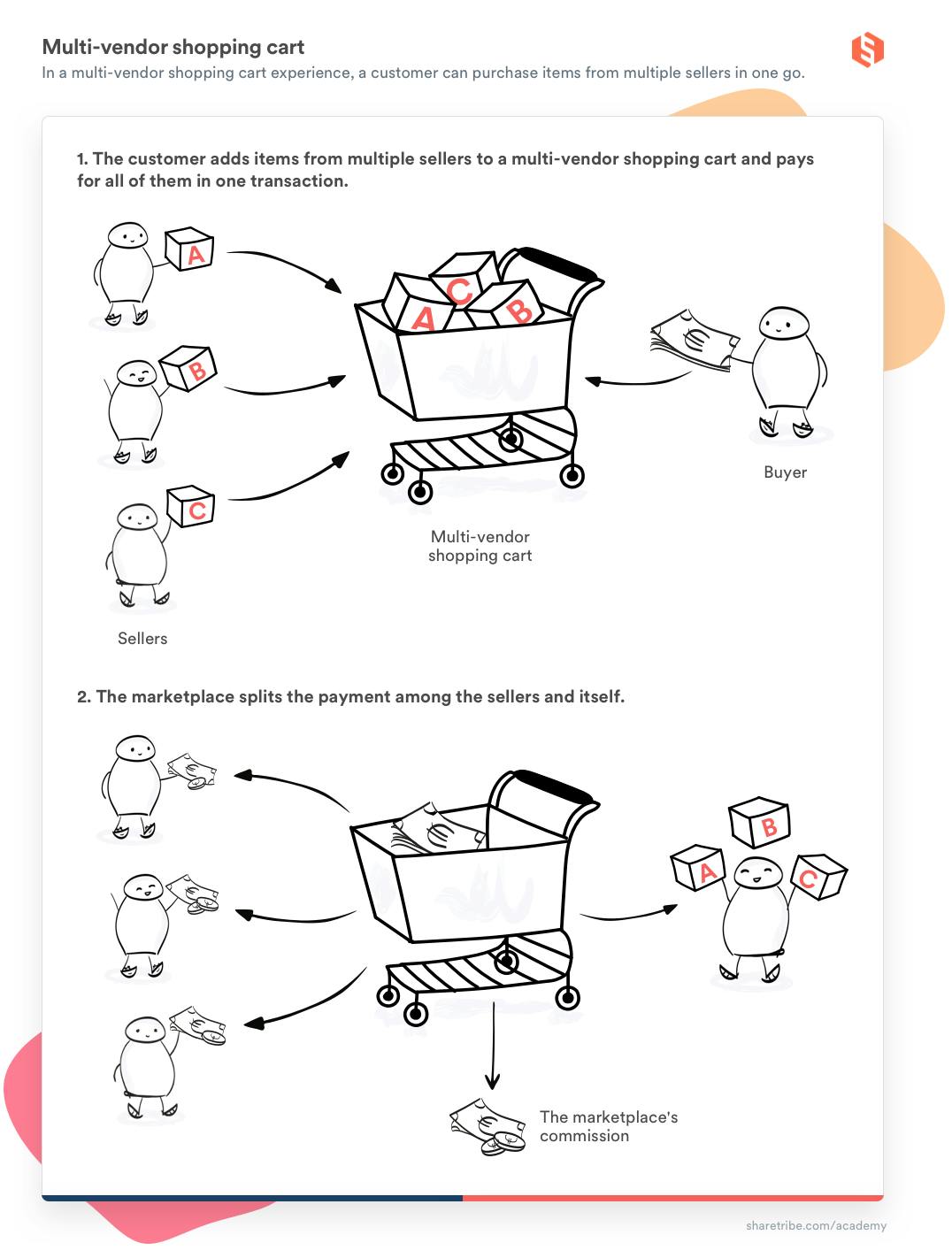
Amazon offers this feature, but not every marketplace idea needs it.
A multi-vendor shopping cart is a complicated feature to build and limits your choice of no-code solutions and marketplace payment providers, so it’s worth to spend a bit of time considering how necessary it is.
For example, second-hand marketplace giants like Vinted and Depop don’t have a multivendor shopping cart. They have a “Buy now” button that lets a customer make a purchase much more quickly. If a customer wants to buy two items, they click on “Buy now” twice.
On the other hand, businesses like Amazon and Etsy have guest checkout, which means they can’t have a similar “Buy now” button. Instead, they need a multi-vendor shopping cart. Without it, customers would have to provide their credit card details, shipping address, and other necessary information for each product they purchase—bad user experience.
If a multi-vendor cart is necessary for your platform, building one on top of Sharetribe's no-code builder is possible, While Sharetribe doesn't include this feature natively, you can add it to your platform by:
- Integrating third-party shopping cart software.
- Hiring a Sharetribe Certified developer to custom-build the feature.
However, before deciding whether or not you need one, you can read more in our guide on building a multi-vendor shopping cart. It provides more context for evaluating this decision.
After having your MVP ready for users, you may face a classic chicken-and-egg dilemma: How do you attract sellers without customers, and how do you acquire customers without sellers?
This a problem many marketplace startups face, but Amazon’s approach is prioritizing supply first. Building a supply base is crucial for offering customers a reason to be interested in your marketplace.
Here are some strategies to convince sellers to join before there are any customers:
- Communicate how your marketplace improves on the experience sellers have on Amazon.
- Offer early adopter benefits like commission discounts or featured listings.
- Offer exclusivity by communicating that only top sellers are invited to join.
- Communicate buyer potential.
Speaking of online forums again, explain to these forums how your marketplace offers a better experience than existing generalist options like Amazon, especially for your specific niche.
Even if your MVP is barebones, an audience-building launch lays the foundation for future growth.
You don’t need to worry about a big PR launch yet. First, launch your marketplace to a small group of first buyers.
So, how to find the first customers? Here are a few ideas:
- Online groups and communities (e.g. Facebook groups, subreddits, etc.)
- Offline groups and communities (e.g. local flea markets or stores, etc.)
- Using paid search engine ads (with a small budget)
- For B2B customers: cold-calling, direct sales, visiting the companies, and taking part in related conferences and events.
For a marketplace like Amazon, an important potential source of customers could be your sellers. If sellers who are currently active on Amazon join your marketplace, they likely have existing customer bases and marketing channels at their disposal.
If you've convinced them that your niche marketplace offers a superior value proposition, they'll be incentivized to promote your platform to their existing audiences.
Ask them to announce their presence on your new marketplace through email lists, social media, referral programs, etc.
Achieving problem-solution fit means validating that you've correctly identified and efficiently solved a real pain point or need for your platform's existing users.
This means your marketplace:
- consistently facilitate transactions between buyers and sellers and
- make revenue from those transactions (but not necessarily profit).
For instance, a problem-solution fit is missing if your marketplace has sixty users but zero sales.
If your goal is Amazon-level success, it can be tempting to start rapidly scaling expenses and efforts after an encouraging initial launch. However, resist the temptation to invest prematurely in scaling.
Amazon's success can be attributed to its focus on experimenting, analyzing customer data, and making changes based on real user behaviors. Rather than guessing what features or expansions to pursue, Amazon relied on real user behaviors to inform its roadmap.
So, don't be too discouraged by poor initial traction. It's rare for a new marketplace to experience explosive overnight growth. What's more important is identifying and doubling down on the elements and channels showing true product-market pull.
A product-market fit means you can prove that you’re in a good market with a marketplace product that can satisfy that market.
To be fair, Amazon didn’t quite follow this rule. The company didn't post its first profitable quarter until 2002, eight years after launching and three years after going public.
However, reaching product-market fit in one category first before scaling is the better option for most founders.
First of all, becoming profitable gives you the confidence that your idea is worth investing in and an actionable playbook you can repeat in new markets.
Second of all, if you’re building a large-scale marketplace, you’ll likely need some external marketplace funding.
Early venture investors like Kleiner Perkins, who led Amazon's $8 million round in 1996, bought into the long-term vision rather than short-term returns. This patient capital enabled Amazon to refine its marketplace model through years of experimentation until hitting product-market fit.
Today’s investors scrutinize far more how you will become profitable. Venture capitalists will drill into quantitative unit economics and your strategic playbook for expanding from your initial product-market fit foothold.
So, reaching product-market fit and having a playbook for doing that in new markets will be critical in your talks with investors.
Here are some metrics to know whether you’ve reached product-market fit:
- Liquidity (the likelihood that a transaction will happen on your marketplace.)
- Repeat-purchase rate
- Unit economics (customer acquisition costs vs. customer lifetime value)
- GMV retention
The most important metric is liquidity. It measures the likelihood that a seller gets their listing sold and that a buyer finds what they’re looking for.
Liquidity requires a balance between sellers and buyers. To increase liquidity, this is a stage where you start building a growth system for your marketplace. Although there are several strategies, choose the ones that work best for you.
Some available options include:
- Marketplace SEO.
- Viral marketing.
- Direct sales.
- Hyperlocal offline marketing.
- Network effects.
From a product standpoint, a simple MVP might not be enough anymore. You'll likely need to invest in product development to improve functionality and user experience.
If your marketplace is powered by Sharetribe, adding custom-coded elements on top of the no-code builder is very easy. If you used more general tools, this is a stage where you’ll need to invest in re-building your platform.
After success in its original books vertical, Amazon began rolling out new product categories, such as music, videos, consumer electronics, and more, in 1998-1999.
Each new category benefitted from the proven demand acquisition, logistics, and marketplace dynamics Amazon had refined over the prior years.
On the geographic expansion front, Amazon took a similar incremental approach. After establishing dominance in the US market, it launched localized sites across the UK, Germany, France, Japan, and other countries throughout the early 2000s.
In 2018, Amazon released its "International Shopping App" to facilitate global cross-border e-commerce.
The key principle is using your product-market fit playbook to expand to new verticals and geographies gradually. Three ways your marketplace can scale include:
- Adding a new location.
- Adding a new category.
- Adding a new customer segment.
Your goal should be to maximize the applicability of your core marketplace infrastructure, processes, and expertise, which you developed through initial product-market fit.
The steps to efficiently scale into new markets are:
- Scale one market at a time.
- Reach product/market fit in that market.
- Create a playbook of what works.
- Repeat the process until your business goals are met.
Overall, ensure you choose your next market carefully. You may do some market research to consider how your second market differs from your first. Then, collect all the best strategies and knowledge you’ve learned when scaling to new markets and turn them into a playbook.
Sharetribe proudly powers over 1,000 live marketplaces. Our customers operate in different markets and niches: B2B, B2C, C2C—product-selling, renting, services.
Here are a few thriving marketplaces like Amazon built on Sharetribe. For even more inspiration, check out our customer gallery.
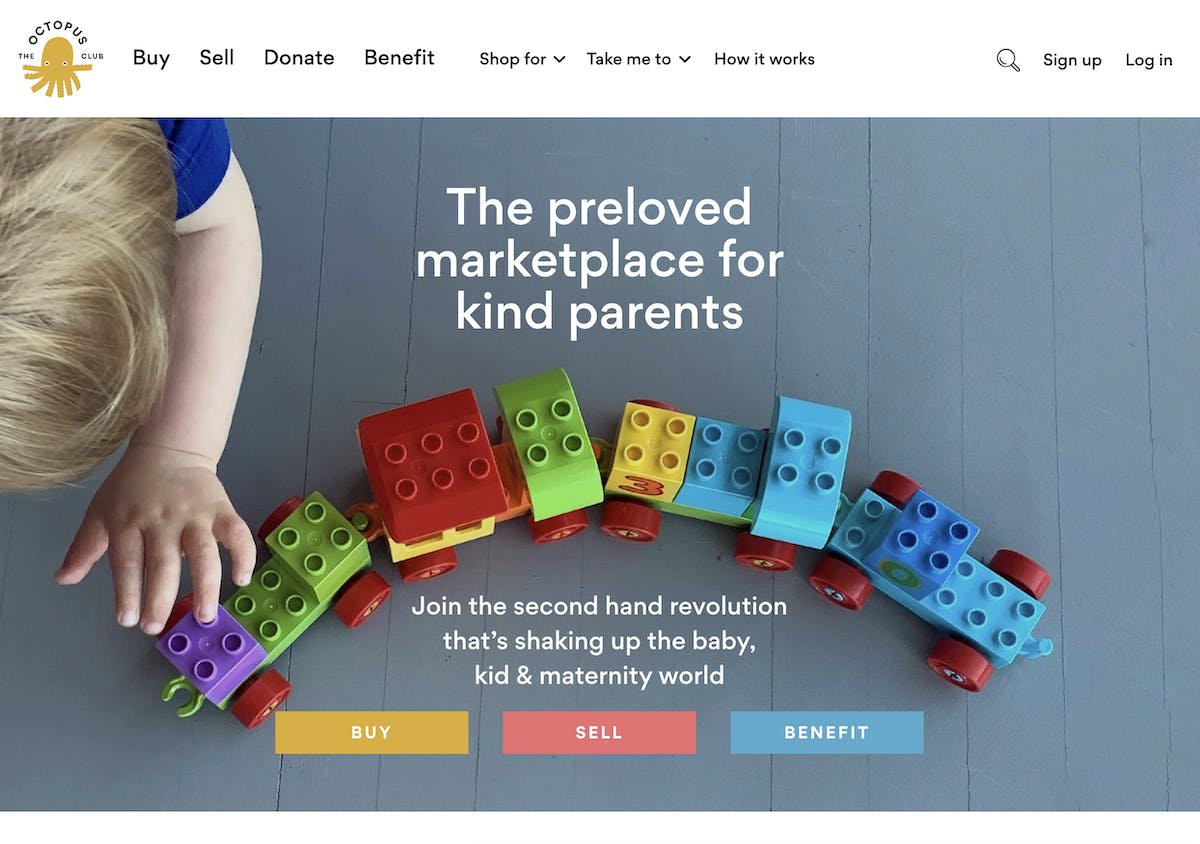
The Octopus Club lets parents buy and sell preloved clothes, toys, and other kid gear. The founder, Ana Rachel Estrougo founded it to solve a problem she and other parents are painfully aware of: making sustainable choices as parents.
For the first year, Ana ran The Octopus Club completely alone. But the marketplace grew quickly and Ana soon realized she needed help.
She launched a crowdfunding campaign and in 15 days, she reached her maximum target of £150,000 pre-revenue. She's also been able to grow the marketplace organically, doing very little paid marketing.
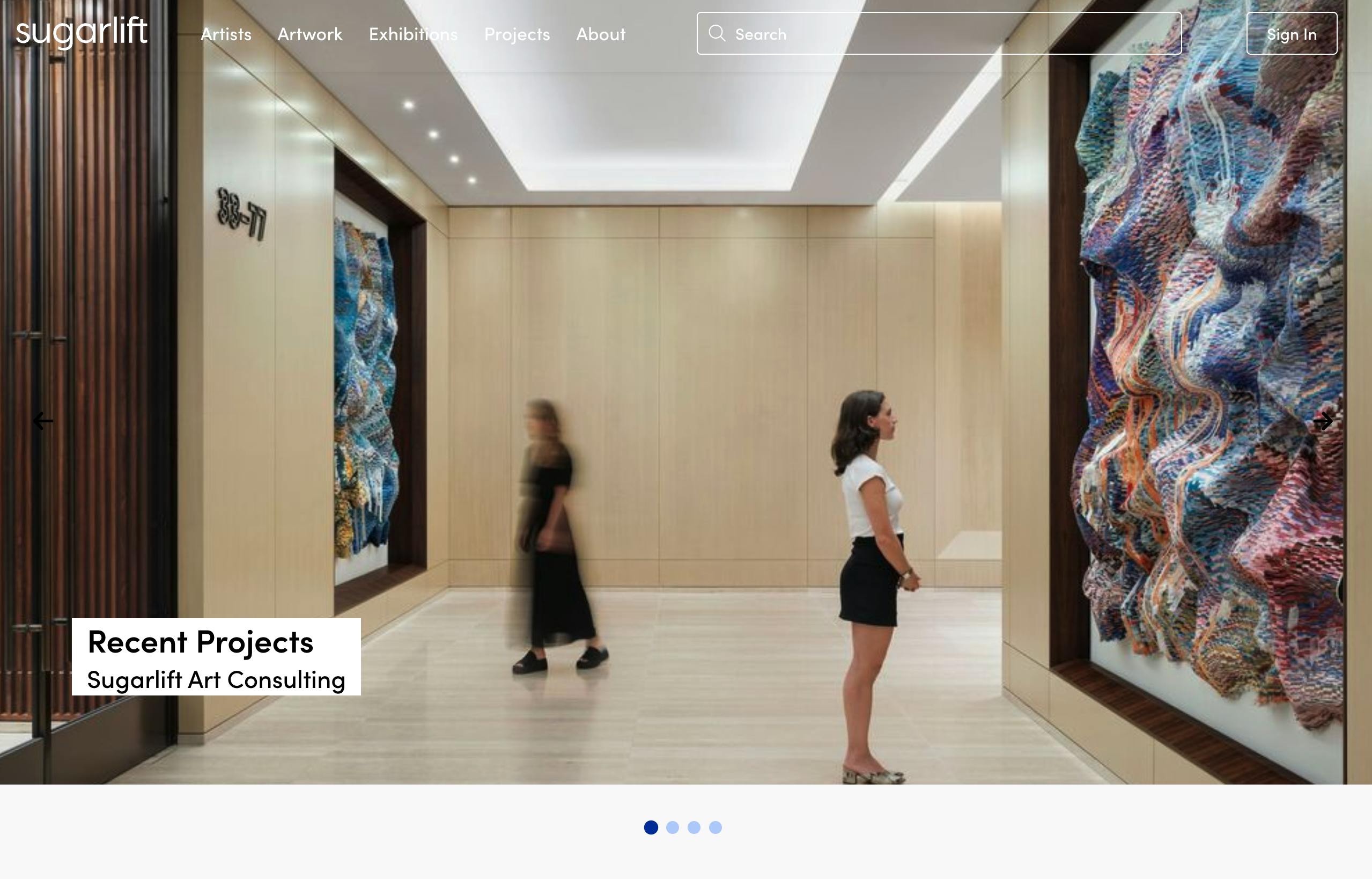
Sugarlift is an art gallery and a marketplace with a mission to make buying art more accessible.
The platform is bridging the gap between brick-and-mortar galleries and the digital world and wants to make buying art more accessible.
The founder Wright Harvey didn't have the technical know-how to build a marketplace website, but that didn't stop him from launching and growing Sugarlift.
Today, there are over 500 artists on Sugarlift’s online marketplace, ten to twenty of whom are exhibited in the physical gallery every year.
Learn more about Wright and Sugarlift here.

Talk about a niche marketplace!
Aircraft For Sale thrives as a marketplace for buying and selling aircraft. Owned by Flying Magazine, the site is made by pilots and driven by the needs of pilots, with big ambitions to improve the plane selling and buying experience.
Building an online marketplace like Amazon has never been this easy. Even if you are not a developer, no-code platforms like Sharetribe allow you to build your first MVP without a single line of code.
Here’s a summary of what you need to achieve this goal:
- Start with a focused niche
- Pre-validate your idea, then build.
- Launch an MVP first.
- Adopt Amazon's core principles of obsessive customer centricity, continuous experimentation based on insights, and data-driven rapid iteration.
- Codify your systems, processes, and unit economics into a proven, repeatable playbook for expansion into new markets.
- Use your established supply/demand to penetrate adjacent product categories and regions capital-efficiently.
Overall, the most important mindset is to start, and the best time is today.
Then, iterate and gather insights to improve your model until you've established product-market fit. With that, you will unlock your ability to scale rapidly like Amazon.
Start your 14-day free trial
Create a marketplace today!
- Launch quickly, without coding
- Extend infinitely
- Scale to any size
No credit card required
